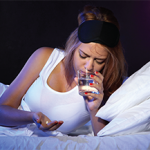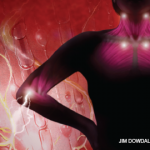This randomized, two-arm, placebo-controlled trial evaluated the efficacy and safety of TNX-102 SL for the management of fibromyalgia vs. placebo, enrolling 457 adults with fibromyalgia across the U.S.
During the study’s two-week, run-in period, patients received 2.8 mg of TNX-102 SL (one tablet) or placebo at bedtime. For the next 12 weeks, patients received 5.6 mg of TNX-102 SL (two tablets) or placebo at bedtime. The study’s primary end point was the change from baseline in the daily diary pain severity score at week 14. This measurement was attained using the weekly averages of the daily numerical rating scale scores, analyzed by mixed model repeated measures with multiple imputation.
The study’s secondary end points included the Patient Global Impression of Change (PGIC) responder analysis, Fibromyalgia Impact Questionnaire-Revised (FIQR) symptoms and function domain, the PROMIS (Patient-Reported Outcomes Measurement Information System), and Sleep Disturbance and Fatigue instruments.
For the primary end point, a least-squares (LS) mean reduction of 1.8 points was observed on the 11-point, daily pain numeric rating scale for patients who received TNX-102 SL, compared with a 1.2-point reduction for those who received placebo, achieving statistical significance. Additionally, statistically significant improvements were observed across all prespecified key secondary end points.
TNX-102 SL was generally well tolerated. The most common treatment-emergent adverse events were oral tingling/numbness and bitter or noticeable aftertaste. These adverse events were usually mild and lasted less than an hour. No medication-related serious adverse events or deaths were reported.
RELIEF Study Findings
Completed in 2020, the prior phase 3 RELIEF study (NCT04172831) had a similar design and results, enrolling 503 patients with fibromyalgia.2,12 In this study, reductions in daily pain from baseline to week 14 were significantly greater in patients who received TNX-102 SL (LS mean change: –1.9 [95% confidence interval (CI) −2.1, −1.7]) compared with patients who received placebo (LS mean change: −1.5 [95% CI −1.7, −1.3]; P=0.01).
However, patients who received TNX-102 SL did not have significant improvement in PGIC scores at week 14. Improvements were observed in FIQR scores, PROMIS scores and daily sleep quality scores.
Overall, 59.7% of patients receiving TNX-102 SL and 46.3% receiving placebo reported treatment-emergent adverse events. The most commonly treatment-emergent adverse events were oral hypoesthesia (17.3% of patients treated with TNX-102 SL vs. 0.4% of patients treated with placebo), oral paresthesia (5.6% vs. 0.4%, respectively) and product taste abnormal (4.4% vs. 0.4%, respectively).


